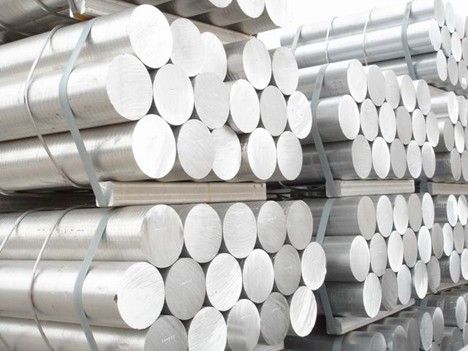Electrodes and electrode materials are metals and other substances used as the makeup of electrical components. They are used to make contact with a nonmetallic part of a circuit, and are the materials in a system through which an electrical current is transferred.
Electrodes and Electrode Materials Information
Electrodes and electrode materials are metals and other substances used as the makeup of electrical components. They are used to make contact with a nonmetallic part of a circuit, and are the materials in a system through which an electrical current is transferred.
There are many different types of electrodes which vary by charge and by application.
EDM electrodes are used in electrical discharge machining (EDM), a process that removes metal with an electrical discharge of very short duration and high current density between the electrode and the workpiece.
Anodes are positively charged electrodes used in a variety of electrochemical processes such as corrosion protection (sacrificial anodes) and electroplating (plating anodes) as well as components in batteries, fuel cells, and electrochemical devices.
Cathodes are negatively charged electrodes used in batteries, fuel cells, electrolysis systems, plating, electrowinning, electron emission, and other specialized processes.
Cathode emitters and filaments are cathodic, field, or thermionic emission cathodes that emit electrons under high voltage or high temperature conditions. Thermionic emitters often consist of a tungsten or refractory metal filament. Lathanum boride emitters are now used, which provide longer life.
Furnace electrodes are used to heat and melt metals or ceramics in arc furnaces. An arc is struck between the electrodes and furnace load material. The arc or plasma generates extremely high temperatures. The electrodes are commonly made from carbon-based materials.
Electrical contacts consist of a high-conductivity, soft, and oxidation-resistant material, often with a second phase to provide anti-welding and/or arc-resistance. They are used in circuit breakers, relays, switches, and EDM applications.
Electrode Materials
Some of the most prominent alloys and materials used as electrode materials are copper, graphite, titanium, brass, silver, and platinum.
Copper is second only to silver in terms of bulk electrical conductivity. Copper has better strength than silver, but offers inferior oxidation resistance. Copper is a common base metal for electrical contact and electrode applications. It is also used in alloys with graphite, tellurium, and tungsten, and is used to make brass and bronze. Copper has better EDM wear resistance than brass, but is more difficult to machine than either brass or graphite. Copper is also more expensive than graphite.
Graphite and carbon are used in a variety of electrode applications. Graphite, flake graphite, and graphitic carbon have a hexagonal, crystalline structure that cleaves or shears easily, making graphite a soft material and effective lubricant. Graphite is the most commonly used EDM electrode material because of its good machinability, wear resistance, and low cost. Like carbon, graphite is a non-metallic substance with an extremely-high sublimation temperature which provides resistance to high-temperature arcs. Fine, grain-sized graphite tends to have better erosion and wear performance, but costs more. Carbon is very inter, corrosion resistant, and electrochemically noble compared to many metals, which make carbon a useful material for electrochemical and electrowinning electrodes.
Titanium is a non-ferrous metal with excellent corrosion resistance, good fatigue properties, and a high strength-to-weight ratio. Titanium’s excellent corrosion properties result in the use of titanium for electrochemical processes such as electroplating, electrophoresis, electrodeposition, electroforming, electro-hydrolysis, electrochlorination, electrofluorination, and electrolysis.
Brass is an alloy of copper and zinc. Brass materials are used to form EDM wire and small tubular electrodes. Brass does not resist wear as well as copper or tungsten, and has a lower conductivity than copper, but is much easier to machine and can be die-cast or extruded for specialized applications. EDM wire does not need to provide EDM wear or arc erosion resistance since new wire is fed continuously during the EDM wiring cutting process.
Silver has the highest conductivity of all metals. The high conductivity, softness (low hardness), and high resistance to oxidation make silver an excellent choice for contact materials. Silver is strengthened with copper and other alloy additions, but at the sacrifice of conductivity. Fine silver is silver with very high purity (99.99% Ag). Pure or fine silver is too soft for most commercial applications, but the material is used as a starting component to form other silver based alloys.
Platinum and palladium have very high erosion and corrosion resistance with low contact resistance. Platinum forms useful alloys with iridium, ruthenium, and tungsten. Palladium forms useful alloys with copper and ruthenium. Major drawbacks of these metals are high cost and the development of high contact resistance films in the presence of organic vapors.
Mixed metal oxide (MMO) electrodes have an oxide coating over an inert metal or carbon core. The oxides consist of precious metal (Ru, Ir, Pt) oxides for catalyzing an electrolysis reaction. Titanium oxides are used for inertness, electrode corrosion protection, and lower cost. Electrochlorination is one common application. The core metals are titanium (most common), zirconium, niobium, or tantalum.
Material Properties
Important properties of electrode materials are conductivity, corrosion resistance, hardness, current load, form, and size. Many of these are determined by inherent characteristics of the material.
Conductivity is the measure of a material’s ability to carry or conduct an electric current. It is often given as percent of the copper standard, which is 100% IACS, (International Annealed Copper Standard). Silver has an IACS of 105 and has the highest conductivity.
Corrosion resistance is the material’s ability to resist chemical decay. A material that has little corrosion resistance will degrade rapidly in corrosive environments; resulting in a shorter lifespan. Platinum group metals are known for their high resistance to corrosion.
Hardness is the measure of how resistant the material is to various kinds of permanent deformations resulting from an applied force. Hardness is dependent on a material’s ductility, elasticity, plasticity, tensile strength, and toughness.
Form refers to the shape an electrical material must fit in order to carry out its operation. Some shapes include contact tips, pins, sockets, stampings, sheets, wires, and wheels.
Size relates to the thickness, length, and width or outer diameter of the form a material takes.
Another specification to consider is toxicity, particularly important when the material is operating in exposed or open environments.
(by EDM Today Magazine – Sinker Electrode Material Selection)

 VN
VN

 EN
EN
 KR
KR
 JP
JP
 CN
CN



 Electrical equipment
Electrical equipment

